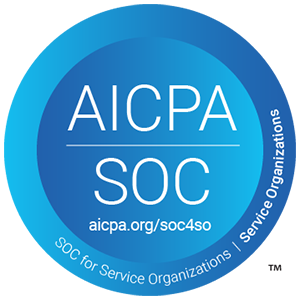Have you ever sent out a referral and wondered what happened next? Did the patient actually get seen? Was the outcome of the referral ever communicated back to you? Or perhaps you’ve questioned whether the referral even reached someone who could see the patient in time.
These are common questions that arise during the referral process, leaving many healthcare professionals uncertain and disconnected. Identifying these challenges up front can help shed light on where the process often falls short—and how improvements can be made to ensure better communication and patient outcomes.
The Challenges of Traditional Referral Processes
During a patient’s healthcare journey, critical challenges can arise when they are referred to another provider. A common transition is between a primary care provider (referral initiator) and a specialty care provider (referral recipient). Despite the best intentions, traditional referral processes often encounter significant obstacles. Outdated and inefficient referral processes can cause significant delays in patient care, frustration, and unfavorable health outcomes. These challenges can compromise the efficiency and effectiveness of patient care. Some key issues that arise in conventional referral management include:
- Lack of Standardization: Referrals may not always adhere to a standardized protocol, resulting in compatibility issues between different electronic health record (EHR) systems.
- Limited Interoperability: Interoperability enables The lack of interoperability can lead to delays and communication gaps during the referral process, hampering timely patient care.
- Outdated Communication Methods: Many referral processes still rely on less integrated methods, such as fax, email, or manual data entry. These methods are not only error-prone but also inefficient. Often, status tracking is conducted manually or on an ad-hoc basis. This can lead to potential delays or gaps in communication between the referral initiator and recipient.
- Time-Consuming Follow-Ups: Without automated updates, the referral initiator may need to follow up manually to check on the referral status, which can be time-consuming and prone to oversight.
- Inconsistent Closure of Referral Loops: Closing the referral loop may be inconsistent, with some referrals lacking proper documentation of the outcome.
- Security Risks: Information transfer may be incomplete or insecure, especially when relying on non-digital methods, increasing the risk of data breaches or loss of critical clinical information.
How Sevida Embraces 360x Referrals
To streamline the referral process, we utilize the 360x referral management specifications. This comprehensive approach is designed to facilitate closed-loop referrals between healthcare providers, which improves interoperability between different EHR systems and Health Information Service Providers (HISPs).
The 360x protocols and standards create an electronic cycle for managing referrals. The process ensures that patient information is transmitted securely and that the status of the referral is tracked throughout its lifecycle. This enhances the quality and efficiency of care transitions, ultimately benefiting patients and providers alike.
Sevida offers customizable referral processes tailored to meet each customer’s specific needs. Our system allows users to initiate referrals with providers, gather intake forms, and manage the entire process seamlessly.
Referral Initiation: The referring provider looks up the recipient in a directory. Relevant clinical information, such as patient history and the reason for referral, is compiled, along with a priority date indicating how urgently the patient needs to be seen. The provider is then chosen based on criteria like location, specialty, and network status. Consolidated Clinical Document Architecture (C-CDA) is required to be sent, and additional relevant documentation from Sevida can be attached. The referral initiator may also upload additional documentation.
Secure Transmission: The referral request and associated information are securely transmitted to the referral recipient’s EHR system using standardized protocols. Our application supports key standards such as direct secure messaging, Health Level 7 (HL7), and Fast Healthcare Interoperability Resources (FHIR), facilitating effective communication and data exchange.
Referral Receipt: Instead of relying on outdated methods like faxing or making phone calls, our system electronically transmits referrals directly to the referral recipient, where they seamlessly appear in their electronic health records (EHR). With just the click of a button, the recipient can accept or decline the referral, making the process efficient and straightforward. This system ensures seamless information transmission, regardless of the EHR systems in use.
Status Tracking: Automated, real-time status updates keep both the referral initiator and recipient informed of key milestones, including when the referral is received, when an appointment is scheduled, and when the referral is completed. Each referral or transfer order is assigned a unique identifier, allowing for tracking throughout the entire process until completion, which enhances transparency and accountability while significantly reducing the likelihood of lost or delayed referrals.
Closing the Loop: The referral loop is closed with a final report sent back to the initiator, confirming the outcome of the referral and ensuring comprehensive communication. The initiator can either complete or cancel the referral.
Effective referral management is vital for ensuring that patients receive timely and appropriate care. By leveraging the 360x referral management protocols in Sevida, we are enhancing the quality and efficiency of care transitions. By streamlining the referral process, we reduce the administrative burden on healthcare providers and improve overall efficiency. Our innovative approach addresses the common challenges faced in traditional referral processes and paves the way for a more integrated, secure, and patient-centered healthcare experience.

